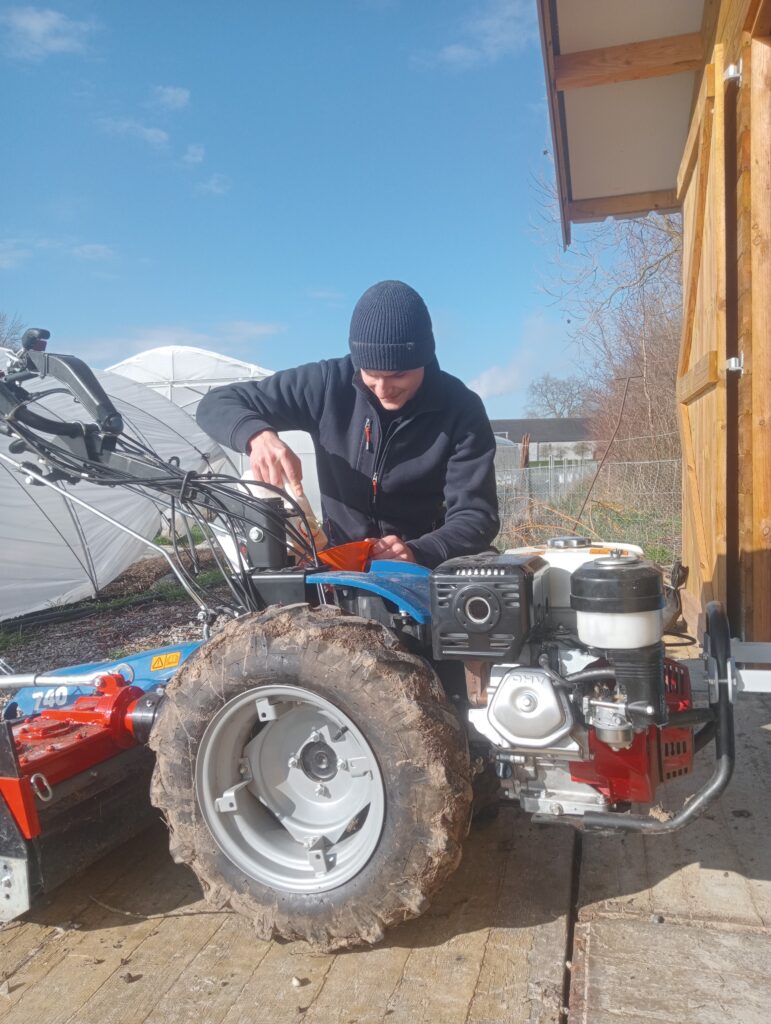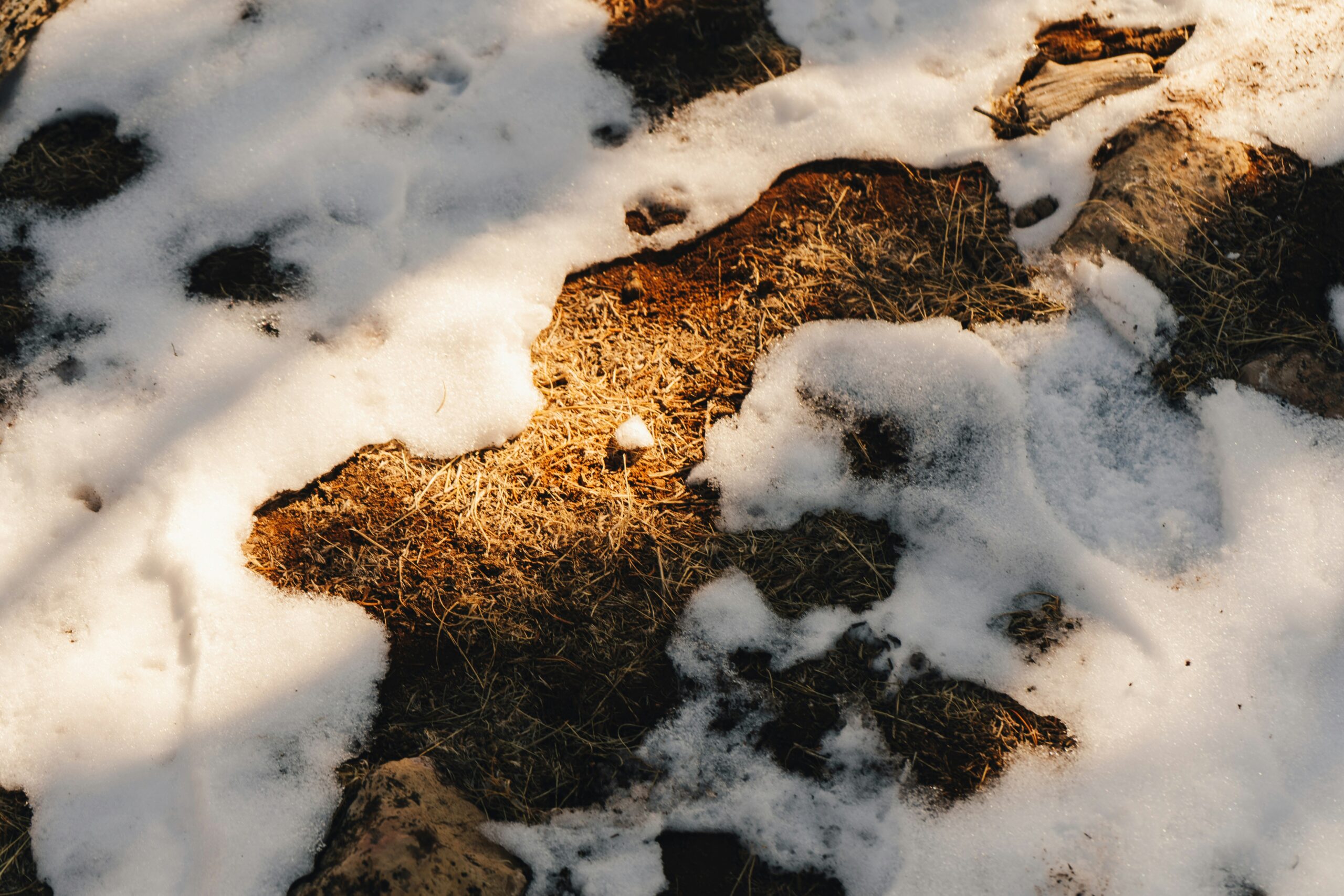To everything, there is a season
In these last weeks of winter, the sun stays with us a little while longer each day. The cold mornings have lost their hard, bitter edge. We can feel the earth waking slowly from a season of rest. But it is only the ground that rests in winter. As we learn from the team at Domaine de Graux, the cold season is a time of work, planning, and renewal for all here. Here, we share their stories of our farm in winter.
Armand

In winter, the pace decreases. Everything grows slower, so there is less work. Winter is an opportunity to tidy up all that I couldn’t do during the high season. I tidy up the field, I tidy up my workshop, I clean the tools, I repair them. I take inventory to prepare for the next season: what do I have? What would I need to buy?
Winter is also the time when I plan for the following year: what vegetables will I grow where, when, and in what quantity? I set goals and plan which vegetables will be in our market baskets each week. I start the plan in November, and I buy seeds in winter.
Once I know what I need to plant and how much, I add in the planting and harvest dates. I transfer this information into a diagram. This allows me, for example, to know that from February to June there will be carrots on this strip. But from June, the plot will be available for something else.
I prepared for planting at the beginning of February, starting with beets, Swiss chard, cabbages, kohlrabi, carrots, and peas. Planting required building two tunnels, measuring five meters by 25 meters each.
This year I am implementing a solarization technique by spreading a transparent film on the ground to create a greenhouse effect and warm the earth more quickly, two weeks before planting. This is the first time I have tested this technique at the Domaine. I heard positive feedback from farmers who used the method to warm the ground to 20° C in March. The earth is a thermal mass, it stores a lot of heat. So, even in the event of severe frost, the cold will not have time to reduce the effect of the solarium.
Once I have planted, the challenge will be retaining the heat as much as possible. The risk is that there will be a big frost and I will lose my vegetables. This is why I warm the soil well before planting.
I put a floating cover, also called a winter veil, over the plantings. The veil is like a blanket over the plants, but it still lets the light through. During sunny days, I lift this veil so that the plants receive more light. Two hours before sunset, I put the veil back over the plants.
Our goal is to increase the temperature, so we can grow vegetables faster, and harvest sooner. We will start marketing our organic baskets at the beginning of May. But in March and April it is still cold.

In Belgium, the weather is not like in the south of France. We must work around the meteorological constraint of the cold, but also the lack of light. Below 10 hours of sunlight, plants cannot grow well. Here, we have less than 10 hours of sunshine daily from the end of October until the end of February. It’s really a limiting factor.
Thus, the tunnels are useful. Each is like a small greenhouse, but low cost. I put the tunnels in place until May and then I will take them off. Combined, the three natural methods of the solarization technique, the floating cover, and the tunnel, increase the heat of the sun and promote light. In May, it will be warm enough for plants sown in winter. So, I will move the tunnel elsewhere, so that I can plant tomatoes, eggplants, and peppers.
During the winter, I work on projects that will lighten my workload in the summer. For example, there are several vegetables that I will plant on woven fabrics. I can prepare the boards and put holes in the tarpaulins, leaving the right space between each. All vegetables that are in the field for more than 3 months will be planted on a tarpaulin. It’s more efficient than coming to weed the crop all the time.
The earth is often frozen in the winter, so I do not work it. In the fall, I covered it with a tarp. The ground cover absorbs and retains heat and prevents the soil from being washed away by heavy winter rains. In the spring, when I go to plant, I will just have to remove this tarp. Just before planting, I amend the soil with compost or fertilize with slurry, to keep all the nutrients for the young plants.
Winter is also the time to think about improvements and implement new things. It’s the time of the year when I can take stock of the year and see what needs to be optimized, what could be improved, what are the interesting new features to implement like a strawberry planting.
During the winter, I really like to put things in order. In summer, I had to leave things in place, postpone a lot of things because I didn’t have time. I am happy to be able to finish what needs to be done, to properly clean what needed to be cleaned to be ready for the new season.
I like that winter moves in slow motion. I get a break for certain tasks, such as sowing, planting, weeding. And that’s a good thing because when the good weather returns, I’ll be happy to take on all these tasks again. It feels good to stop and find pleasure in a task. Routine can create weariness.
The most difficult time of winter is the first cold weather. It’s always a bit surprising, it’s as if the body isn’t used to it. Fortunately, I had a month’s vacation from December 15 to January 15, when it was very cold. But the cold is important for the earth, it helps regulate the population of fungi and insects. The cold also impacts the taste of vegetables. To avoid freezing, a vegetable will increase the sugar level in its cells. A carrot will be sweeter if it was grown during winter rather than summer.


